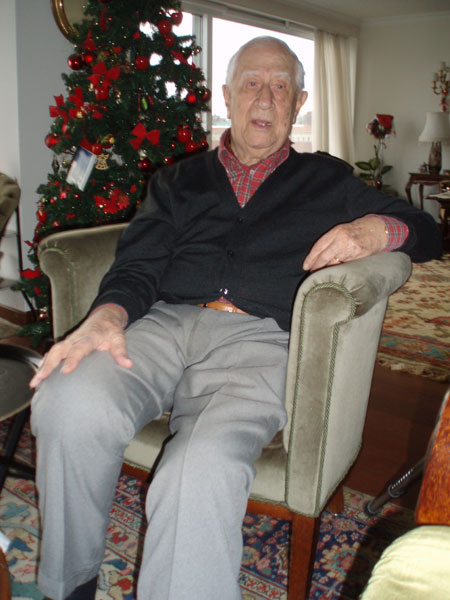D’Andria Family of Istanbul - Remo D’Andria with Osman Öndeş
The D’Andria family have Italian origins, and different branches have lived in Istanbul and Izmir, some of whom were engaged in the shipping trade as well. In the XVIth century the D’Andria family emigrated from the Montpellier region of South of France initially to Cyprus. They married into the prominent Catholic families of that island such as Giustiniani, Morosini etc. In addition examining the D’Andria tree shows the female lines carried these Catholic names: Castelli, Portu, Marcopoli, Braggiotti, Corpi, Tubini, Stefani. When Cyprus passed from Venetian to Ottoman control in 1571, the family moved to the Island of Chios that had also recently fallen to Ottoman rule (1566). Through multiple marriages the D’Andria could claim to be the root of the prominent Giustiniani family. One of the foremost researchers of the D’Andria has been able to reconstruct huge sections of the ‘English branch’ of the family, having spent 8 years on this study.
The residency in Chios again brought many marriages of the various prominent Catholic families of this island: Castelli, Portu, Alberto Franchi and equally the families of Reggio, Timoni, Marcopoli, Corpi, Dapei, Grimaldi, Giudici, de Marchis, Vegeta, Velasti have D’Andria blood. For example in 1606 Simonetta d’Andria marries Vincenzo Giustiniani and the reverse husband-wife situation is with the marriage of Pantaleone d’Andria and Elizabeth Giovanni Giustiniani in 1637. Similar mixtures happen with the marriages of Pasquale d’Andria with Marulu Giustiniani de Giacomo in 1645 and Ilario d’Andria with Bianca Giustiniani de Bernardo in 1652.
The first documented D’Andria in the Ottoman Empire is Pantaleone d’Andria who marries Elizabeth Giustiniani in Chios in 1565. According to the notary entry in Genoa by a clerk named John Passano dated 1789 stated that till 1584 the D’Andria family were of Genoa. Indeed Levantine D’Andrias have always stated their roots were of Genoa. Going further back records show that a Leonardo d’Andria was one of the famous masons responsible for the building of Chios castle. Greek historians such as Georgio Zolota Nikkos and Simon Perris have confirmed this. Interestingly Leonardo d’Andria was born in Ragusa (Dubrovnik, Dalmatia). In addition records from the period 1618-1619 in Corsica show 2 D’Andrias there: Giovanni Antonio and Gasparo, pointing to families with this name scattered across the Mediterrenean but unconnected with each other, making the genealogy extra difficult to pursue.
The Ottoman Admiral Piyale Pacha returning from his unsuccessful siege of Malta in 1565, captured Chios without a fight, and the island was bound to Ottoman taxation. During this time most wealthy Genoese left the island. The island had a mixed Catholic and Orthodox population termed Rayah by the Ottomans. These two communities were allowed to practice their religion in peace but after 1664 the antagonism betweeen these Christian groups turned to violence at times. The Catholic Bishop Andrea Soffiano was imprisoned and the island was from then onwards nominally headed by the Orthodox Metropolitan. In 1669 after 32 years of conflict Venice lost the island of Crete to the Ottomans and in 1683 the second Vienna siege by the Ottomans ended in failure. In 1694 a Venician force under Antonio Zeno captured Chios but were ejected a year later by Turks who committed atrocities in the process. More than two centuries after arriving in Chios the D’Andria family despite being Catholic were convulsed with the events of the Greek uprising in 1822 and Giovanni d’Andria was murdered while two of his cousins were able to escape to seek sanctuary in Istanbul. Following the 1881 earthquake of Chios no D’Andrias remained on the island. The D’Andrias became successful merchants and in particular Pietro di d’Andria under the trade name of P. Andria & Co. established a successful carpet manufacturing and marketing company in Smyrna / Izmir. This was the first company that later formed the giant union of the Oriental Carpet Manufacturers.
Some branches of the D’Andria used the armorials of the Giustiani family. The oldest Chios born D’Andria grave is dated 1677 and is in the Feriköy Latin Catholic Cemetery in Istanbul - view tombstone. The oldest Izmir (Buca) born D’Andria grave is that of Joseph d’Andria dated 1867 buried in the former Kemer Cemetery, Izmir. Other members of the family are buried in Karabaglar Catholic Cemetery, Izmir.
The D’Andrias were engaged in a wide range of commerce from brokerage, import and export and were responsible for the running of the D’Andria Passage in Pera / Beyoğlu and Hotel de Londres in nearby Tepebaşı. Descendants of the family are now scattered in America and Europe and some settled in Salonica while François Jean Auguste d’Andria lived in Gallipoli, Turkey.
 |